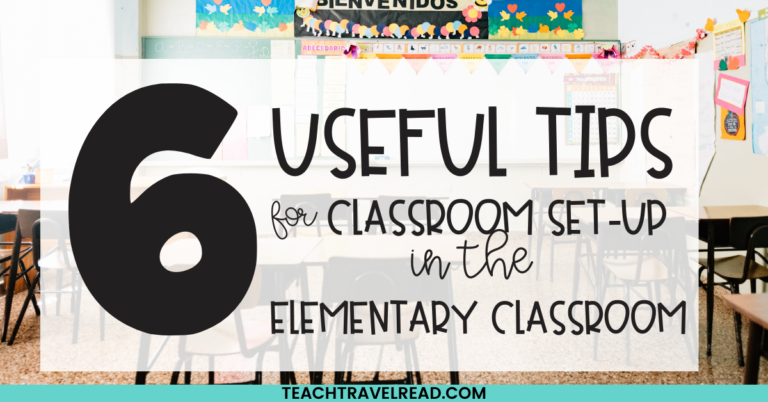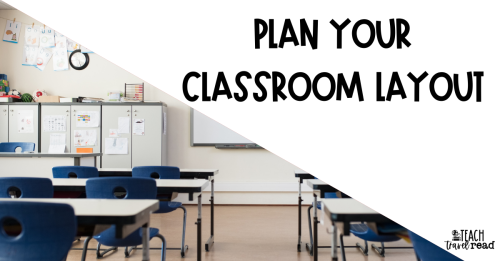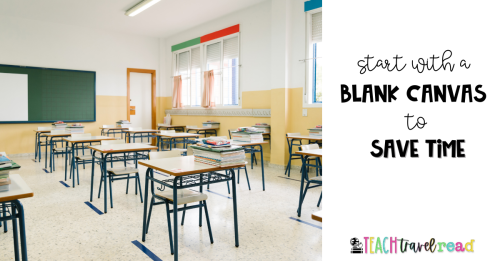
When you think about the new school year…what thoughts go through your mind? Is it wondering how to set up your elementary classroom?
Setting up an elementary classroom is more than just arranging desks and chairs. It’s about creating a space that encourages engagement, academic growth, and creativity. We will explore the essential steps to organize and decorate an upper elementary classroom. So, grab your favorite beverage, and let’s get set up for success!

Before actually setting up your classroom, take time to plan your classroom layout. Think about the goals you have for your students and how the physical design will impact those goals.
Consider the following…
Before decorating, declutter and clean your classroom. Remove unnecessary items, old decorations, and outdated materials. The blank canvas will give you a fresh start for the new school year. It will also help make it easier to plan your classroom setup.

Walls are a crucial part of any elementary classroom. They will help set the tone of your room.
Create a warm and inviting atmosphere by…
A well-organized classroom makes it easier for students to access materials. It also helps you spend less time cleaning up.
Think about the following…
Don’t forget that you spend 7+ hours/day in your classroom! Incorporate personal elements that show your teaching style and personality.
As you set up your classroom, prioritize safety and accessibility.
And there you have it! Your elementary classroom is now ready to ignite young minds and inspire future leaders. This classroom setup isn’t just about organizing stuff; it’s about creating a space that meets the needs of your students. You’ve got this!